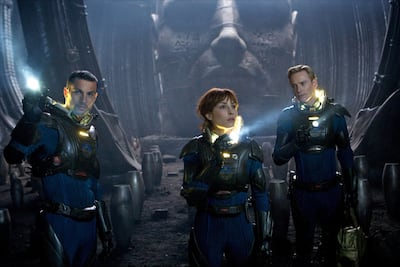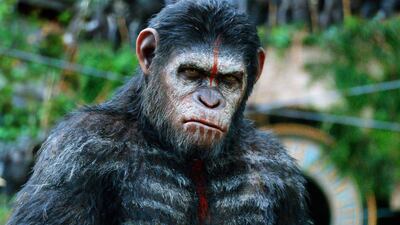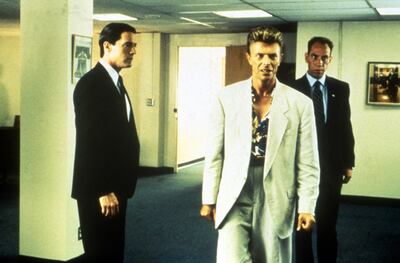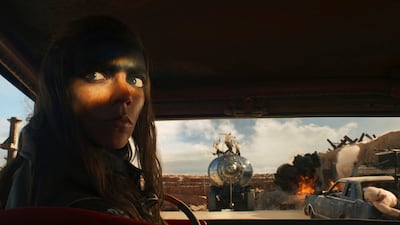Ah, the prequel. Long a mainstay of the Hollywood release schedule, they've become increasingly popular in recent years, as studios continue to wring out as much juice from their most lucrative intellectual property as they can. When Furiosa: A Mad Max Saga releases next week, it will be the third prequel in cinemas, along with Kingdom of the Planet of the Apes and The First Omen.
It's only when you peruse the list of the many prequels released over the years that you'll realise how bad of an idea prequels are, as most turn out forgettable at best, rarely adding anything of value to a story that likely didn't need a look into its past.
Some, however, have been excellent. Curiously, some of the best ones were disliked at the time, perhaps because they reframed a beloved film in a way fans were not yet ready to grapple with.
And without counting films often considered prequels on a technicality, such as Indiana Jones: The Temple of Doom and The Godfather: Part II, here are five of the best released to date, including one set for release in the coming days.
5. Star Wars: Episode III – Revenge of the Sith
George Lucas's Star Wars prequel has watched its stock grow in recent years. Even the much-maligned Episode I – The Phantom Menace, the first film in George Lucas’s prequel trilogy, has many defenders. And while that film has been a punching bag for years, there was never any doubt of the value of Episode III.
Titled Revenge of the Sith, the film answered one of the most important questions in the franchise: how Jedi Padawan Anakin Skywalker turned into Darth Vader, the brutal and murderous Sith lord. The first two episodes could be accused of having too much politics and not enough action, but there are no gripes about Episode III, an action-packed film from start to finish.
The duel in the film between Anakin and Obi-Wan is masterfully choreographed and edited; not only is it exciting, but sad as well. The disappearance of innocence and a master’s difficult choice in defeating his misguided student. Hayden Christensen excels as the young Anakin, portraying a character embattled and conflicted but too corrupted to make the correct decisions.
4. Prometheus

Sir Ridley Scott returned to the Alien franchise in 2012 with Prometheus, set before the 1979 original, which had already spawned three popular sequels.
With the franchise needing to be revived after the fourth film proved a critical and commercial failure, Scott went back to the origins of the story, setting up the scenarios that led to the creation of the xenomorph alien we met in his original. And unlike most prequels that focus on the beginnings of a singular character, Prometheus goes back to the birth of the world itself, positing a wider connection between humans and xenomorphs.
Prometheus does just about everything right: it answers lingering questions while asking even more ponderous ones. It ticks the sci-fi, horror and action boxes, creating a thrilling big-screen experience. The film sets up a sequel, which arrived in the shape of Alien: Covenant in 2017. This also set up another sequel, which probably will never happen, as the franchise heads for a reboot of sorts.
Nevertheless, the film is an excellent example of a prequel that takes interesting elements from an origin film and expands them to create a dense and philosophical film.
3. Furiosa: A Mad Max Saga
Fans of Mad Max: Fury Road are an easy target for Furiosa.
The film, releasing in UAE cinemas on Thursday, has all the chrome-breathing, fire-spitting, gas-guzzling thrill of the 2015 instalment. Furiosa may start with an unsettling CGI feel, but from the get-go, the story offers a strong enough hook to see through the sheen. The CGI component no longer becomes a buffer as the film picks up pace, with high-octane scenes that will have audiences hailing the V8 along.
Performances across the board are strong. Anya Taylor-Joy offers a memorable take on Imperator Furiosa, as does Alyla Browne, who plays the character’s younger version. Chris Hemsworth is hypnotic as the film’s antagonist, the aptly named Dr Dementus. In fact, there are no small actors in Furiosa, with every role working in favour of the world building’s machinery – so much so that viewers may even end up envying the extras in the film – whether they’re a maggot-tending bottom-feeder or one of the crew of the prestigious War Rig.
2. Dawn of the Planet of the Apes

Dawn of the Planet of the Apes takes place a decade after Caesar and his band of highly intelligent apes barrel through the police force on the Golden Gate Bridge for the safety of San Francisco’s forests.
In the time between, a Simian flu has swept around the globe, decimating the lion’s share of the human population, its resources and technology.
The apes, in contrast, have thrived in the forests, building a community with Caesar as its leader. However, tensions rise as a group of humans tread into the forest, looking for a hydroelectric dam in hopes of restoring electricity to their community.
The tensions are not exclusively interspecies. Power struggles are rife between each group and, like any good Planet of the Apes film, it touches on larger political dynamics. However, Dawn of the Planet of the Apes is arguably not only the best instalment within the Andy Serkis-starring prequels, but perhaps the franchise as a whole. The film boasts stellar performances by Serkis, Gary Oldman, Jason Clarke, Keri Russell and perhaps most delightfully of all, Toby Kebbell, whose portrayal of the war-mongering Koba is a layered look at trauma and offers one of the most memorable film villains of the past decade.
1. Twin Peaks: Fire Walk with Me

For years, Fire Walk With Me was widely considered filmmaker David Lynch's greatest failure. Booed at its Cannes premiere (though some in attendance dispute this), slated by critics and ignored by audiences, the prequel to Lynch and Mark Frost's phenomenon series Twin Peaks has steadily seen its reputation grow in the decades since, thanks in part to its influence on the widely praised 2017 revival series.
Watching it now, it's clear why many were put off. It's still one of the most disturbing films ever made, following Laura Palmer (Sheryl Lee), the murder victim whom audiences met as a corpse in the opening of the show's pilot, in the week before her death. Much like Lynch's other work, it creeps under your skin on a subconscious level, making it difficult to articulate why exactly you think you may think you hate what you're witnessing.
It's possible that we just didn't have the societal framework to understand what Lynch was depicting at the time but viewed in the current social context, it's clear as day. The film captures the tortured mind of an abuse victim vividly and horrifically, portraying her as deeply flawed yet still deserving of empathy.
The most potent truth depicted here is in Palmer's alienation. She desperately needs help and yearns to be understood, but no one around her can grasp what she's going through. That's the true horror here – the feeling of being utterly alone, isolated even from those who supposedly love you the most. Powered by Lee's tour de force performance and some of the best imagery Lynch conjures up in his filmography, it's that feeling that lingers long after it ends. The rare follow-up that enriches what came before it.

